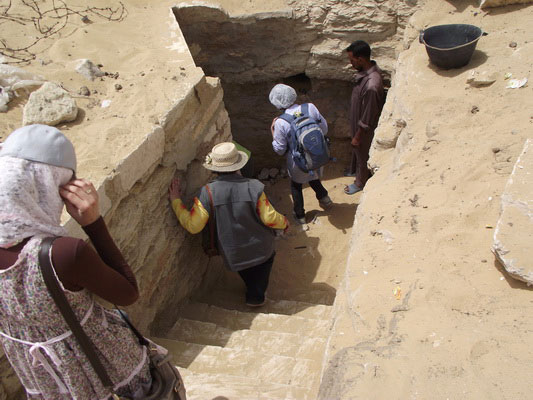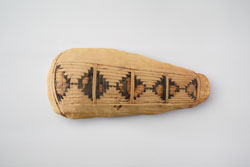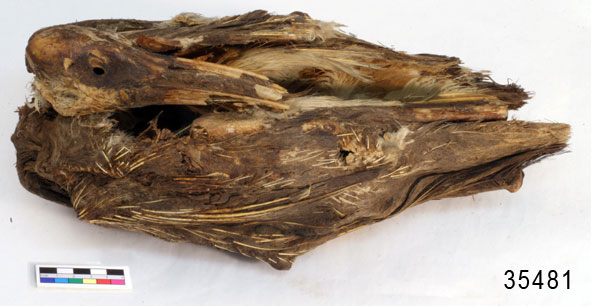On the return of Napoleon's invading army from Egypt in 1798, his soldiers and savants (scholars) brought many treasures as spoils of war back to France. Among these were large numbers of animal mummies including cats, jackals, dogs, crocodiles, snakes, Sacred Ibis and other birds, as well as human mummies. The Sacred Ibis were of particular significance because the ancient Egyptians mummified literally millions of these birds and stored them in underground catacombs. These mummified Sacred Ibis were offered as gifts to appease the ancient god Thoth.

Photos: The walls of the catacombs are typically lined, floor to ceiling, with Sacred Ibis mummies packed inside pottery jars (left); Drs Sally Wasef and Samia El Marghani at the entrance to the south Ibis catacomb in Saqqara (top right) and broken Ibis mummies are pictured among the stack of entire pottery jars (bottom right).
However, it occurred to a number of the scholars at the French Museum of Natural History that these mummies represented an ideal opportunity to identify changes in a single species over time. That is by comparing the skeletons of the birds that had been mummified long ago to living birds of the same species, they could test an emerging idea of the time, namely evolution. Cuvier conducted the test by having his assistant recover a skeleton from a mummy and, after some confusion about which species was mummified, he correctly identified it as a Sacred Ibis. Cuvier then declared that there had been no morphological change and he suggested that this finding was proof that evolution had not occurred over the ~3000 year period and that Lamarck's evolutionary ideas were ludicrous.


Photos: Some Ibis mummies were elaborately wrapped and presented to the God Thoth (left); the remains of Sacred Ibis individuals recovered from mummies (right).
Lamarck agreed that no discernible evolutionary changes had occurred in Sacred Ibis. However, he suggested that this was due to the fact that there had been insufficient time, an explanation that Cuvier discounted out-of-hand. Lamarck argued this because he thought that evolution was a slow process and that it was driven by the environment. Furthermore, both Lamarck and Cuvier agreed that the environment had been relatively stable over the time period in question. These ideas were consistent with Lamarck’s theory that evolution was a slow process acting over geological time and that environmental change was the ‘motor of evolution’. Of course, these suggestions are consistent with our general understanding of evolution even today. Nevertheless, Cuvier’s rejection of the idea of evolution set back acceptance of the theory in Europe, for many decades. With current advances in ancient genomics and DNA sequencing, the authors are revisiting this important historical example and suggest they will likely detect evolutionary changes when comparing modern and mummified Ibis. This would throw new light on this first test of evolution.
Reference
The Sacred Ibis debate: The first test of evolution. Curtis C, Millar CD, Lambert DM (2018). PLoS Biol 16(9): e2005558. https://doi.org/10.1371/journal.pbio.2005558


































